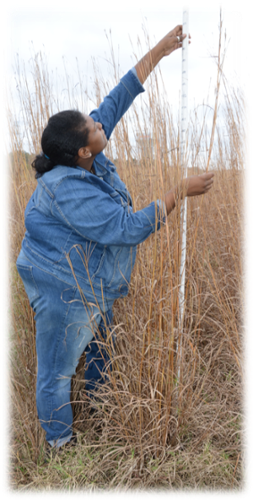Pasture Ecology and Management
 The Pasture Ecology and Management Unit aims to provide producers with information on improving forage production for ruminant livestock through strategic management of promising pasture species available at different times of the year. Because of their ability to withstand drought, native warm-season grasses (NWSGs), such as big bluestem, gamagrass, indiangrass, and switchgrass, are good candidates for extending the summer grazing season.
The Pasture Ecology and Management Unit aims to provide producers with information on improving forage production for ruminant livestock through strategic management of promising pasture species available at different times of the year. Because of their ability to withstand drought, native warm-season grasses (NWSGs), such as big bluestem, gamagrass, indiangrass, and switchgrass, are good candidates for extending the summer grazing season.
ARS scientists expect that incorporating NWSGs into existing forage systems will help alleviate summer forage shortages, which will then help small producers achieve forage-based small ruminant production that is profitable. Because of this potential, researchers in the ARS have focused a series of research projects on NWSGs, including: investigating the effects of transplanting and seedling density on the establishment of, and initial weed challenges to, stands of NWSGs; gauging the plant and area yields of NWSGs in pure and mixed stands, as well as the effects of harvest frequency on the production, the quality, and the stand recovery of these forages; and evaluating the grazing preferences of small ruminants for NWSGs in pure and mixed stands, either with or without legumes. Other studies on dual-purpose small grains, such as teff (Eragrostis tef), are aimed at helping small producers take advantage of growing consumer interest in the unique health benefits of these plants, as well as increased demand for ethnic foods.